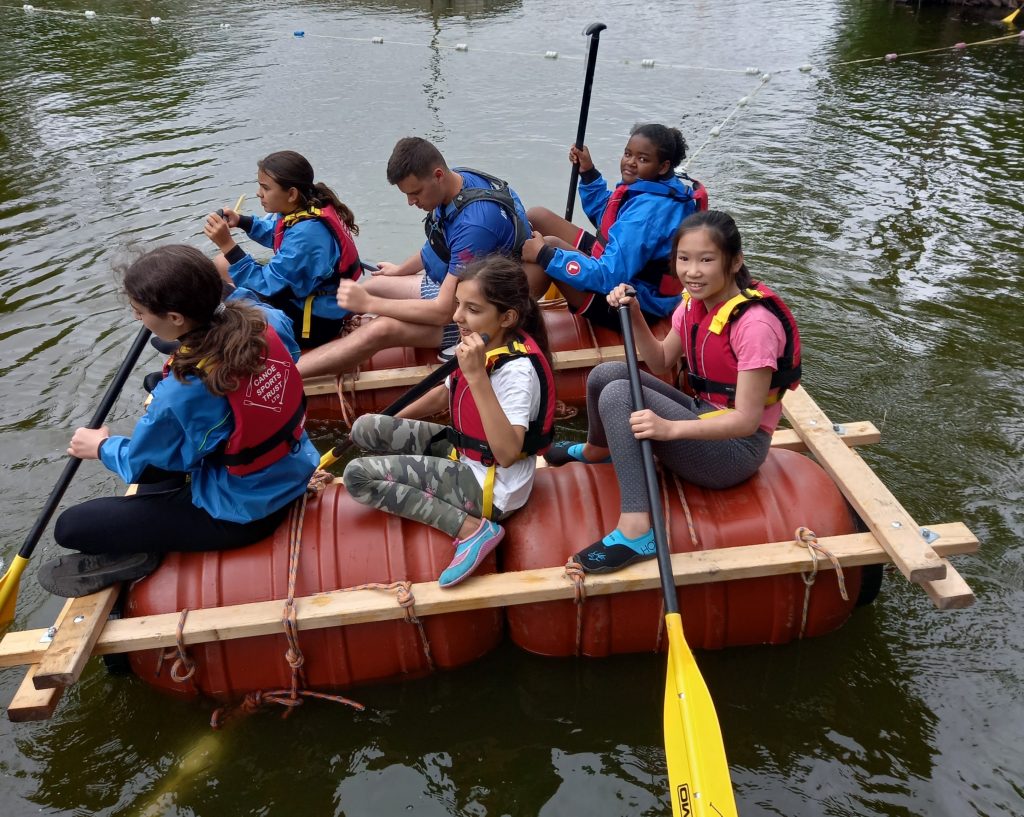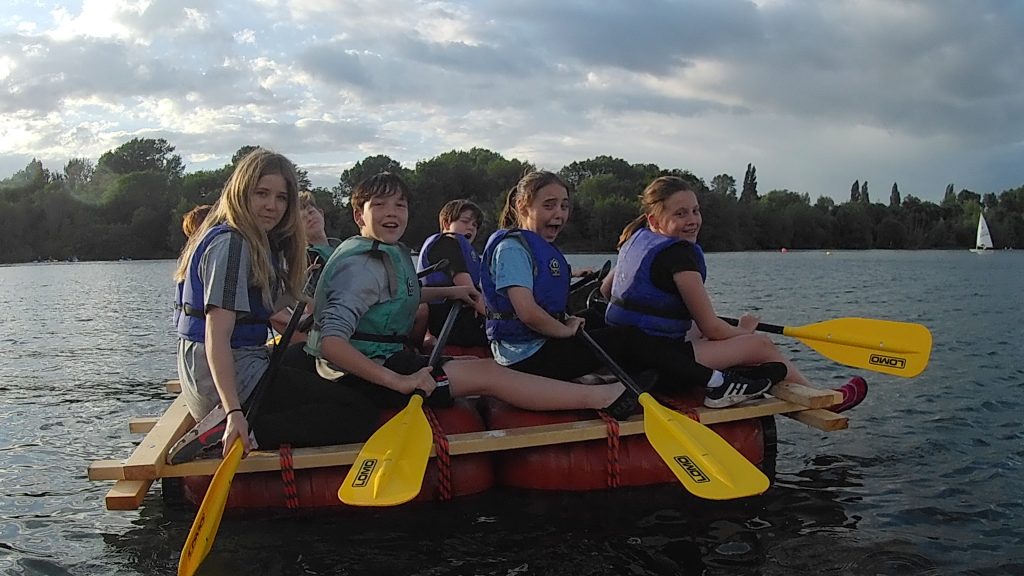Youth leaders may not always possess the skills to deliver certain activities so the Canoe Sports Trust is able to offer a variety of courses tailored specifically towards providing leaders the required skills to allow them to pass on to their newly acquired knowledge to the young people, thereby ensuring the leader avoids the embarrassment of not knowing everything there is to know about the subject whilst ensuring the young people for whom the activity is intended, learn from the experience and have a great time.
Improvised rafting can be self-taught and there is plenty of material and guidance on the internet. For the leader that has read the available material and guidance but would prefer to actually give it a go, then you should enrol on to a rafting permit or a learn to lead a rafting session course.
Either course explains the two types of rafts that can be constructed from basic materials, our simplest raft involves securely attaching large barrels to a bolted wooden frame with four barrels attached, providing sufficient buoyancy for four adults or up to eight youngsters.

Bolted frames provide a good entry level rafting experience suited to leaders and young people with limited knots and lashing experience, thereby ensuring that in most cases, the completed raft will float and will not fall to pieces, the moment it is launched. With barrels firmly secured to the bolted frame, the rafts should remain intact sufficient that a journey can be completed and with other rafts of likewise construction and allow distance races to be conducted against other rafting teams.
More elaborate rafts require a frame to be created from wood spars that need to be lashed together to create a ridged frame on to which barrels can be attached. Rafts constructed from spars require the team to be more familiar with basic knots and lashings, first requiring the spars to be laid out, correctly spaced, elevated off the ground and lashed together with ropes to create a strong frame.

To guard against early failure, experience leaders may need to check lashings are secure and may require some to be re-tied as one failed lashing (once afloat) may result in the raft falling apart.
Failure is an inherent risk associated with rafting activities, reasons for failure may include poor design, poor ropework, overconfident boarding of the craft, weight distribution imbalances of the crew, purposeful capsize or piracy. Some would argue that the main purpose of building a raft is the enjoyment of watching it fail, or ensuring other rafts fail before yours does.

At the Canoe Sports Trust we have strived to identify a construction method resulting in minimal risk of failure. A raft remaining intact for the duration of the activity, allows the crew to achieve satisfaction in creating a vessel that remained seaworthy and allows them to participate in some challenges, races, and games with the raft they have built.
A raft that remains intact for the duration of the activity, avoids leader heartache because most of the young people remain aboard with minimal swimmers to keep an eye on, the raft can be returned to shore at the end of the activity with the crew available to dismantle the raft avoiding the need for assorted flotsam and children to need gathering and returning to the shore.

Attendance on one of our rating permit courses will not teach you to become a knotting expert, this is something you need to do as homework, but will provide you information and ideas to help you better plan and deliver inspiring raft sessions in sheltered water environments.








